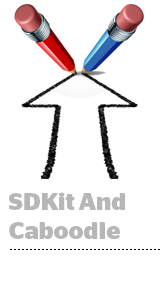 Mobile monetization platform Supersonic on Tuesday released a souped-up version of its SDK, in beta for the last five months, that joins rewarded video mediation through its supply-side platform with mediation for mobile interstitials via ironSource’s technology.
Mobile monetization platform Supersonic on Tuesday released a souped-up version of its SDK, in beta for the last five months, that joins rewarded video mediation through its supply-side platform with mediation for mobile interstitials via ironSource’s technology.
The two companies merged last September.
Essentially, it’s a single SDK that enables developers to manage multiple demand sources for multiple ad formats through a single integration.
“This is actually a big reason behind why the companies merged, to consolidate our technology so developers can use one SDK to monetize,” said Gil Shoham, co-founder and former CEO of Supersonic – and now CRO of the combined Supersonic and ironSource entity.
It’s well known that developers aren’t fond of installing multiple software development kits.
Getting added functionality and access to more demand sources through an existing SDK integration is pretty handy, said Christian Calderon, recently appointed CRO of French game publisher Ketchapp, and formerly the VP of marketing and revenue at Dots, a Supersonic client.
“Finding the right mediation partner is tough,” said Calderon. “But once you do, you tend to stick around for the long haul.”
Supersonic and ironSource have a combined SDK footprint of about 80,000 apps. Developers that have the Supersonic SDK already installed will automatically get access to mobile interstitial mediation. App publishers that use ironSource for display and programmatic video will be given time to migrate to the new consolidated SDK for access to the combined offering, Shohan said.
Mediation is one way to avoid the headache of a waterfall, Calderon said.
“Working with multiple ad networks is a manual process that takes time and energy,” he said. “It’s easier to depend on their algorithm as opposed to incorporating multiple sources in a manual waterfall.”
Which is good for the publisher, certainly. But monetizing in a way that doesn’t hinder the user experience will always be a challenge, Calderon said.
“As many developers find, a majority of users do not spend money on [in-app purchases], so my biggest priority is … to monetize in a thoughtful way,” he said. “[It’s about] figuring out how to incorporate ad units with the core loop of the game” while also maximizing the average revenue per daily active user.
A mixture of rewarded video and interstitials generally does the trick.
The interstitial, in particular, is a sort of workhorse unit. Developers use it because it converts, but it’s not the greatest in terms of user experience. “They can be a fairly intrusive form of advertising and we’re aware of that,” Shohan admitted.
That’s why native will become a bigger focus for Supersonic and ironSource, he said.
“It’s up to the publisher how deep they want to go and how much time they want to spend integrating advertising in native ways,” said Shohan. “But there is always a better user experience when a user has a choice, which is why we developed rewarded video, which is opt-in.”
In the meantime, though, developers continue to rely on formats like the interstitial to keep the lights on.
“The fact is, they perform well for advertisers,” Shohan said. “That’s why they’re still a standard and why developers are willing to show them.”














